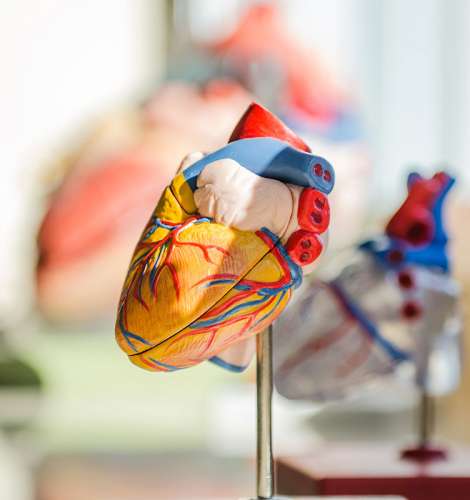Humans are built for endurance, with shock-absorbing joints and springy tendons. Now, a new study shows that the human heart is also optimized for endurance - with features developed dependent on the individual’s level of physical activity!
Using ultrasound imaging, researchers examined the hearts of more than 160 adult men from four groups: long-distance runners, sedentary adults, highly trained football linemen, and the Native American farmers (Tarahumara) renowned for their running ability.
For comparison, they also looked at the hearts of 43 adult male chimpanzees, which are one of our closest evolutionary cousins.
When comparing the thickest of the heart’s four chambers, the left ventricle, researchers found that:
- endurance runners and farmers have larger, elongated ventricles with thin walls—traits that help pump large volumes of blood for a long time
- football linemen, whose training emphasized short, high-intensity exercise, have shorter, wider ventricles with thicker walls
- sedentary humans have hearts shaped like those of the football linemen
- chimps, whose main activities are short bursts of high-intensity exercise like fighting or climbing, have the shortest, thickest ventricles
High-intensity activity causes blood pressure in the arteries to surge for a short amount of time, so small chamber volume, thick walls, and rounder shapes are beneficial to the linemen and chimps, ensuring that enough blood still flows to the brain.
Current research data from studies of humans, chimpanzees, and gorillas shows that unlike other great apes, humans evolved multisystem capabilities and numerous features to augment heart stroke volume, enabling moderate-intensity endurance physical activity that creates heart volume stress.
It is not clear how evolution shaped human hearts. It appears that phenotypic plasticity of the human left ventricle trades off pressure adaptations for volume capabilities, becoming more similar to a chimpanzee-like heart in response to physical inactivity or chronic pressure loading.
Even without evolutionary pressures, a couch potato lifestyle seems to shape the heart and thicken the ventricle wall in ways similar to those seen in chimps!
Researchers suggest that the human heart is shaped partly dependent upon moderate endurance physical activity and its absence. This, in combination with a highly processed diet, likely contributes to the modern epidemic of hypertensive heart disease.
They emphasize that changes in heart shape are likely reversible, with the incorporation of endurance activities like distance running and swimming over many years.



